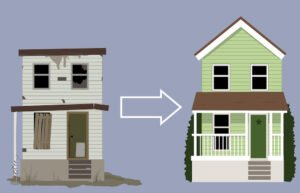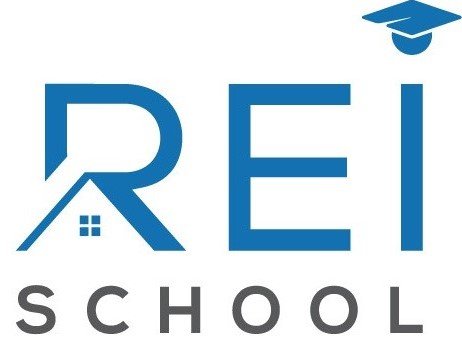January 6, 2025 | 3 Minute Read
Flipping houses is thrilling and insanely lucrative when you watch it on HGTV. The reality is far from the what you see. Whether you dream of becoming a celebrity flipper or simply want to explore a profitable real estate opportunity, one question always stands out: How much do house flippers actually make?

House flippers typically earn $10,000 to $50,000 per deal. A general rule of thumb is to aim for a 15% return on the after-repair value (ARV) of a renovated property.
Profit depends on the property purchase price, renovation scope, time to complete and sell, and unforeseen issues. Quick “lipstick, carpet, and paint” flips are lower-risk but yield smaller profits, while extensive rehabs offer higher returns but come with greater risks and challenges.
Flippers often use the 70% Rule to determine a property’s maximum purchase price:
Maximum Purchase Price = (ARV × 0.70) − Estimated Repair Costs
Example ARV: $150,000 70%: $105,000. Rehab costs: $25,000. Maximum purchase price: $80,000
Renovation costs play a critical role in the 70% Rule, and underestimating or mismanaging them can significantly undermine the profitability of a house flipping project.
But, what happens when the renovation process gets in the way of the 70% rule? Here are 6 areas you need to watch for before starting construction.
Underestimating Renovation Costs
It’s easy to underestimate repair costs, especially if you’re inexperienced or encounter hidden issues like structural damage, mold, or outdated electrical systems. If actual renovation costs exceed your estimate, the profit margin will shrink or disappear entirely. For example, if you budget $50,000 but end up spending $70,000, your potential profit drops by $20,000, which might turn the deal into a loss. Always include a contingency budget (10-20% of the total repair costs) for unexpected expenses.Scope Creep
Expanding the renovation plan beyond what is necessary to meet market expectations, known as “scope creep,” can inflate costs. This often happens when flippers try to add unnecessary upgrades or over-improve the property. Over-renovation can eat into profits and result in spending that doesn’t increase the after-repair value. Stick to renovations that directly enhance the property’s market value and appeal to the target buyer.Labor and Material
Prices for labor and materials can increase unexpectedly, especially during supply chain disruptions or high demand for contractors. Rising costs can turn a deal that initially fits the 70% Rule into one that no longer does, reducing profitability or requiring additional out-of-pocket funding. Get fixed-price contracts with contractors where possible and monitor material costs closely.Misjudging Required Renovations
Skimping on renovations or failing to identify essential repairs (e.g., plumbing, roofing) can result in a lower appraisal or resale value than expected. If the property fails to sell at the projected after-repair value, the profit margin is reduced. Worse, it may require additional work after listing, delaying the sale and increasing holding costs. Conduct thorough inspections and prioritize high-impact repairs.Extended Renovation Timelines
Delays in completing renovations due to contractor availability, permit issues, or unforeseen problems can increase holding costs, such as mortgage payments, utilities, and taxes. Prolonged timelines add unplanned expenses, eroding the profit margin set by the 70% Rule. Create a detailed project timeline and work with reliable contractors who can adhere to deadlines.Inflated Renovation Budgets
In high-demand markets, contractors may charge premiums for labor, or certain upgrades may be required to meet market standards (e.g., luxury finishes in upscale neighborhoods). Higher-than-expected costs can skew the calculation and force a flipper to exceed the 70% threshold to remain competitive. Know your market and plan renovations that balance cost and buyer expectations.
Renovation costs are the most unpredictable component of house flipping, and failing to control them can jeopardize the deal’s profitability. Accurate cost estimation, thorough inspections, contingency planning, and disciplined budgeting are essential to successfully applying the 70% Rule.
